One aspect of this hobby that may help some to stay interested in it is that there is almost constant debate as to what is the best way to do anything in a reef tank. Whether it is halides versus LEDs, or alkalinity, or flow, there is always a difference of opinion. In this regard, what the optimal nutrient levels should be definitely is another topic about which there is no consensus.
At the beginning of the hobby the rule was to try and keep the nutrient levels,(phosphate and nitrate) as close to zero as possible. Looking back, I now realize that there were several reasons why this was thought to be the best level. First, these low levels are what the levels are in the ocean and on most reefs, and since back then we thought our tanks were “mini-reefs” it makes sense to try and emulate the nutrient levels on the reef so keeping them near zero was the ideal.
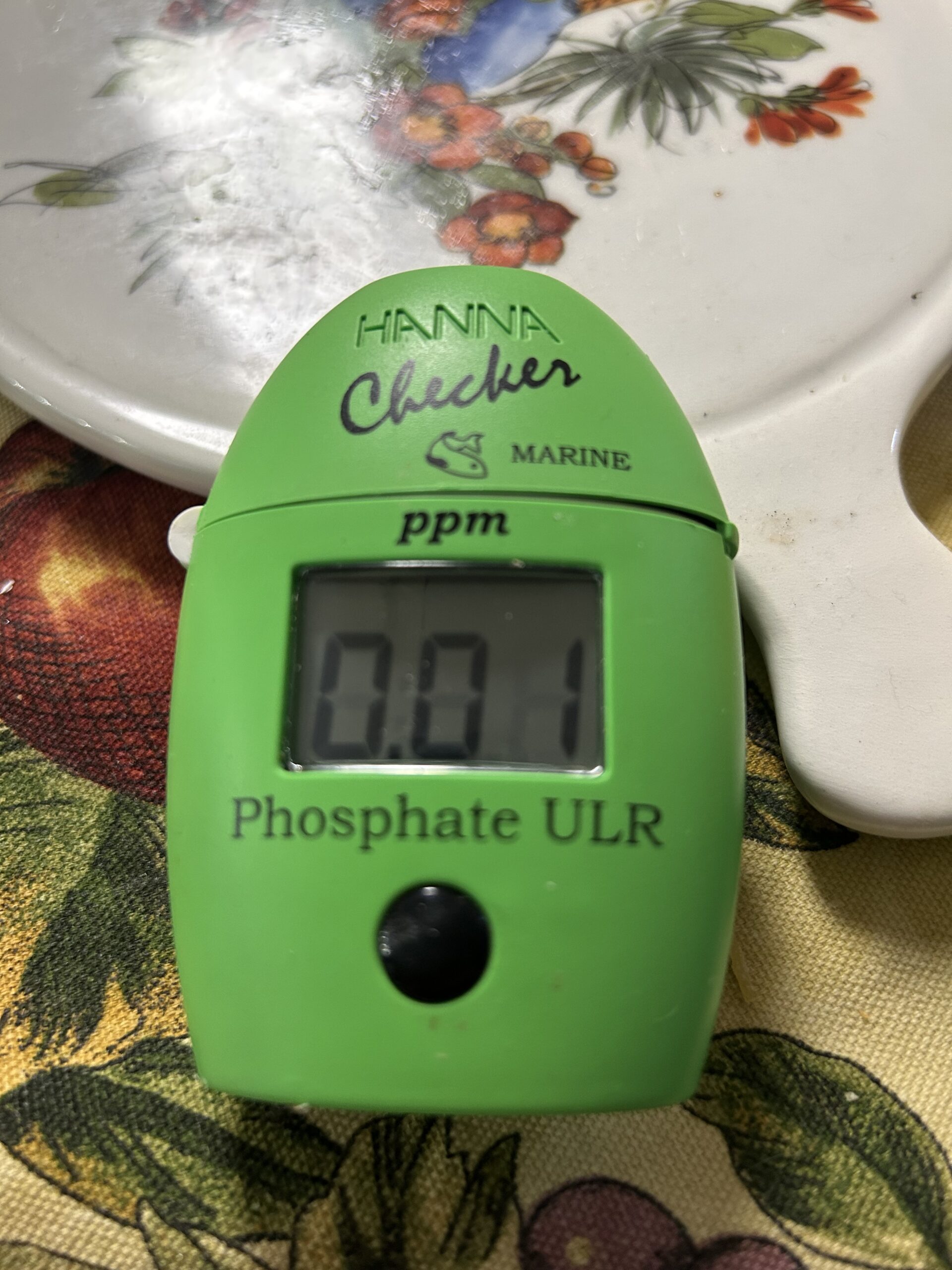
Second, the test kits back then were not very precise, especially at low levels, so having levels of phosphate and nitrate near zero on the tests, usually meant that some were present so zero was again the goal. Lastly, high nitrate and phosphate levels were associated with having algae issues, so again the goal was low levels low algae.
As a result of these goals, keeping the nutrient levels at near zero became dogma, and as such most hobbyists strived for keeping these levels in their tanks near zero. Keeping nutrient levels near zero, even produced a school of hobbyists who went to great lengths to keep these levels at undetectable levels, and they often went to great lengths to achieve this. Corals produced in this situation often took on a pastel or pale look or in some instances incredibly bright coloration, which their owners enjoyed.
Personally, I thought these corals looked sick and unhealthy and unless all other factors were perfect, there was a constant risk of these corals succumbing. For this and other reasons over the last decade, this school of reefkeeping, which promotes keeping the nutrients levels as low as possible, has gradually become less numerous in the hobby. This has been the result of our gaining a better understanding of how important providing adequate nutrient levels are to our corals.

While it is true that the levels of phosphate and nitrate on the reefs is close to zero, actually less than 1.5-.1ppm for nitrate and less than .08-.05 for phosphate, keeping these levels this low in a reef tank, in my opinion, is not optimal for the animals. Why these levels are not optimal in a reef tank is that even though the actual levels of these nutrients are extremely low on the reef there is literally an infinite reservoir of them in the waters surrounding the reef. As a result, they can be consumed in small amounts constantly on a reef and never run out.
This is not the case in a reef tank, which again, is significantly different than any reef. This is why, in my opinion, the levels of nutrients in a reef tank need to be higher than they are on a reef.
Both nitrate and phosphorus are crucial for most living organisms as they are essential for their metabolism, growth, and reproduction. Nitrogen, from nitrate, is a component of amino acids, nucleic acids, and many other cell components. Nitrate is an essential food source for the zooxanthellae that are present in each coral polyps.
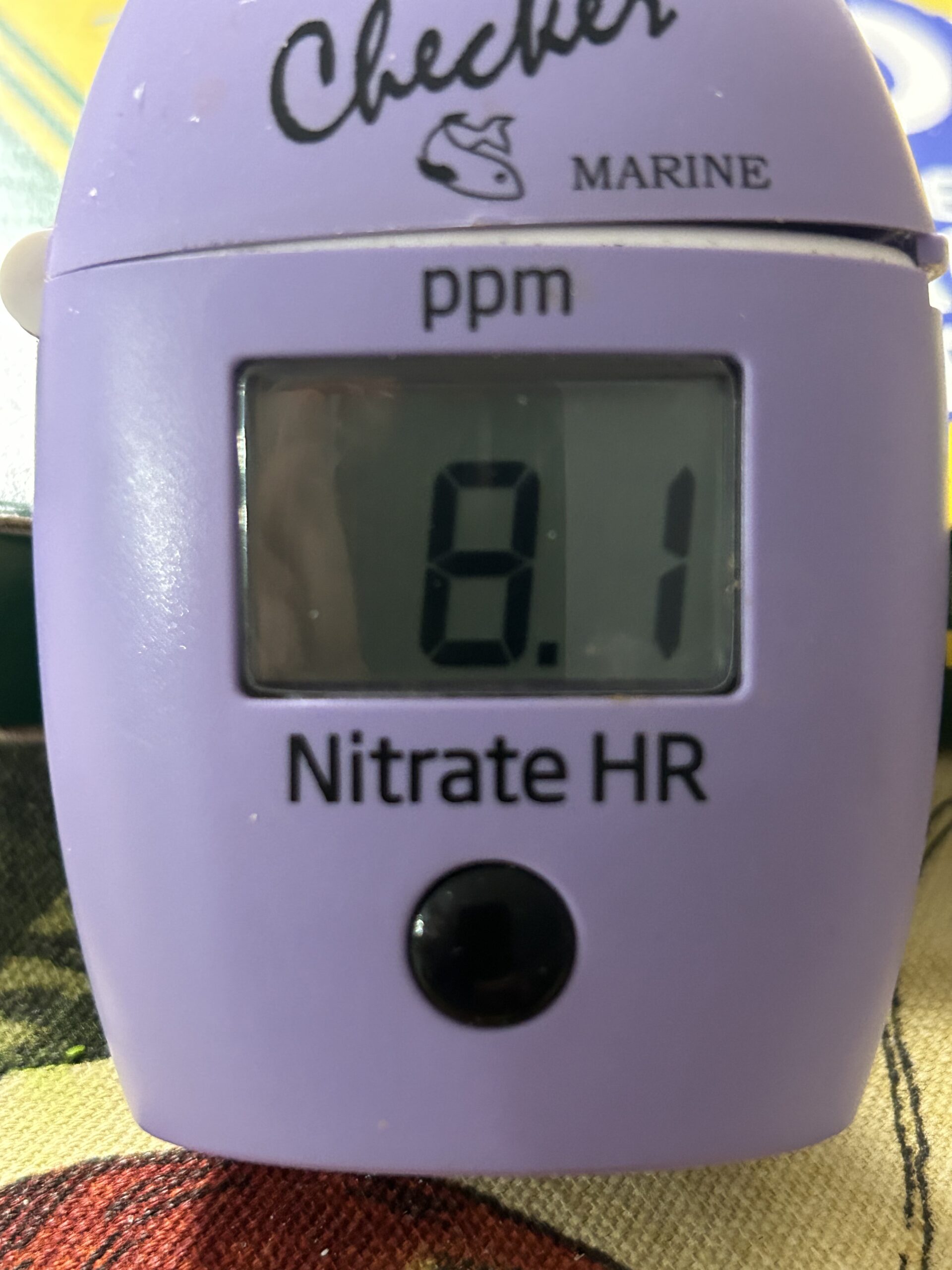
These zooxanthellae provide the corals with the crucial nutrients they need in order to survive and grow. It has also been shown that keeping nitrate at proper levels can improve coral coloration.
Phosphorus is critical for the formation of adenosine triphosphate (ATP), one of the primary building blocks for energy storage as well as in phospholipids. Phosphorous, can occur in several forms on the reef including dissolved inorganic phosphorus (DIP), particulate inorganic (PIP), organic phosphorus (POP), and dissolved organic phosphorus (DOP). On the reef the most bioavailable form of phosphorus is orthophosphate. This form is the form most rapidly taken up by phytoplankton, and bacteria.
Corals themselves take it up directly in small amounts, but excessive amounts can lead to reduced skeletal growth and rapid proliferation of algae. For these reasons, phosphate has often been considered a problem compound in reef tanks.
If phosphate is so problematic, then where does it come from and how do we keep it out of our tanks is often a question that is asked. Phosphate is present in just about any food that we feed our fish and corals, even plant-based ones.
Phosphate is added when any food goes to waste as well as in the waste from the fish. It is then taken up by bacteria as well as phytoplankton, heterotrophic protozoa as well as some bacteria. It has also recently been found to combine with carbon, nitrate, and some metals, making its cycle far more complex than used to be realized. However, for simplicity’s sake its role both positive and negative, will be looked at simply in this article.
As noted above corals come from nutrient-poor water yet require both nitrate and phosphate to survive and grow. This leads to an interesting paradox in that how can these waters be so nutrient-poor yet still be one of the most diverse and productive environments on the planet? And more importantly for us hobbyists how can we replicate this in our small, closed boxes?
In my own experience over the past forty years, my tanks have had nutrient levels run the gamut and I have seen tanks with virtually every level of nutrients imaginable. From all of this, I have learned several valuable lessons in regard to nutrient levels.
First, there is no perfect set of numbers that will work for every tank. While there is a range and a ratio that works, the numbers themselves do not have to be exact. Second, stability is far more important than the numbers. As with everything in this hobby keeping things stable is critical for long-term success, even nutrient numbers.
The corals we keep come from a very stable environment, therefore they are not accustomed to rapidly fluctuating anything so if the nutrient levels are not where they should be they should not be manipulated quickly. This also leads to the idea of not chasing numbers. If a tank is thriving and the corals look like they should, but the nitrate or phosphate levels are not where at the desired numbers there is no reason to adjust them.
The corals themselves are a good indicator of if the numbers are good. And lastly, the best way to keep the numbers at the right levels is to test regularly, this will be discussed in the next article.
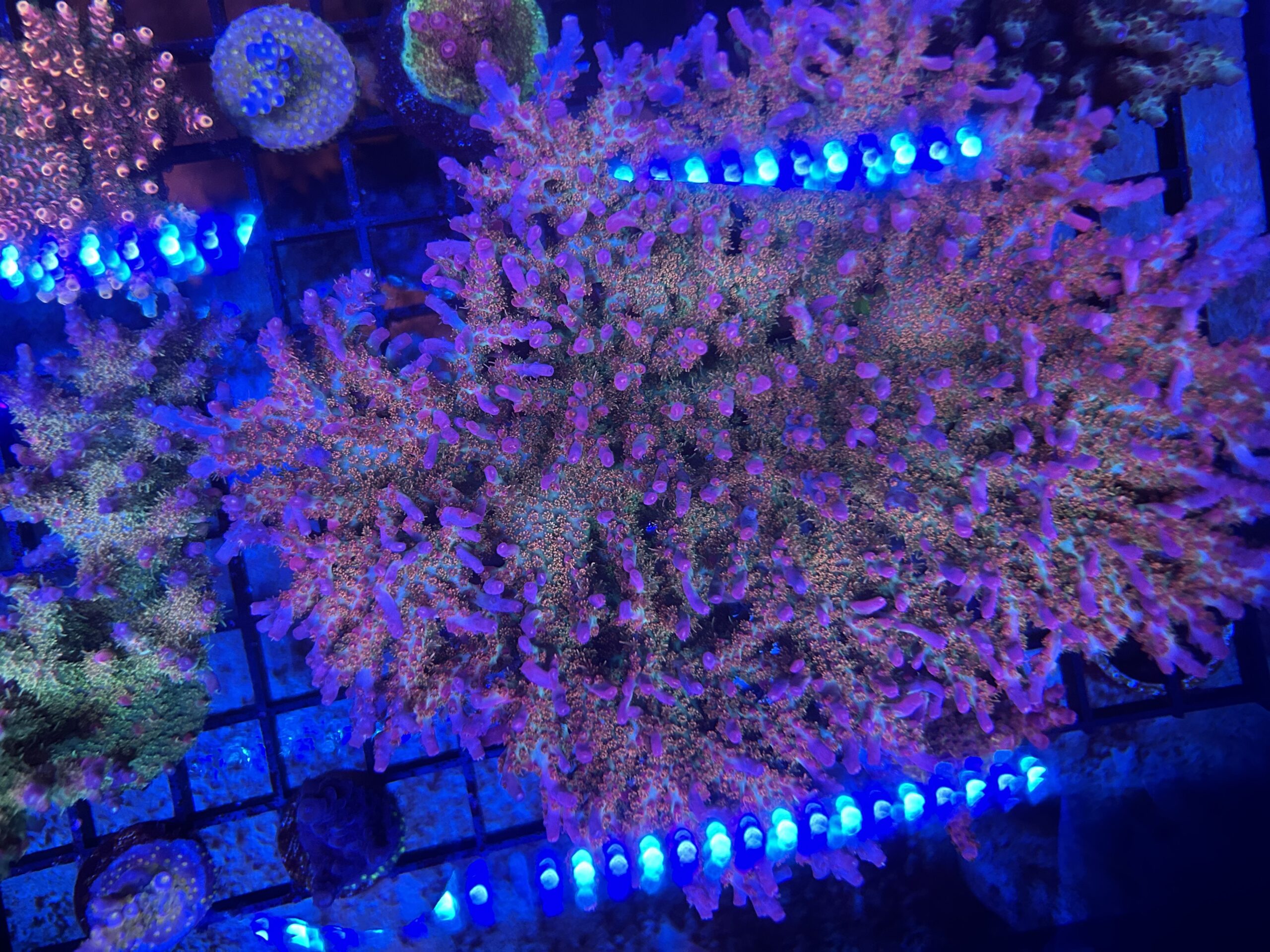
Nitrate and phosphate goals
Having said all of this, what are the preferred ranges for nitrate and phosphate in most reef tanks? For phosphate, the goal in most tanks is to keep it in the range of .05-0.1 and with nitrate from 5-10. I personally use Hanna high-range nitrate and low-range phosphate to check these levels. It is too difficult for me to see the color changes in other tests. But you may find that you prefer other means of testing.
During COVID I contacted twenty well-known hobbyists who had very successful tanks, with some of the most colorful corals in the hobby. Some of these hobbyists, aquaculture corals for the hobby and their corals are as healthy and colorful as any in the hobby. They were gracious enough to share all of the parameters of their tanks and even the little things they do to help keep their tanks thriving.
From them, the following data in regards to nutrients was obtained. The phosphate levels in these twenty tanks ranged from 0.01-.30 with an average of .073 with three of these tanks having phosphate levels of 0.01. when they ran the test. These individuals all said they did not test for phosphate, so these readings were a one-time occurrence.
Since acquiring this information, I have spoken to these three individuals, and they all had started doing more regular testing of phosphate and some even started adding it, owing to how low these levels were. They are all now attempting to keep their phosphate level at around .03 now.
Nitrate in these tanks ran from 1-32 with a mean of 8.64 with four of the tanks having a nitrate level of 1 or near 0. None of the tanks, however, showed a 1 or less in both measures, nor did most have the classic 1:16 ratio. After looking at the data, during COVID we had nothing but time, I found what I thought was an interesting ratio.
In the tanks that I thought had the most colorful corals, they all had colorful corals, but these I felt were some of the most colorful, the ratio of nitrate to phosphate was at least 50:1 and in most of them 100:1.
After seeing what this ratio did in these tanks I started running it in my tanks and after 5-6 months I thought the corals were indeed more colorful. But I was worried that this was just viewer bias and only had my own tank to base this on. Again we were still in COVID so I really could not travel about and view other tanks, but I kept this ratio in the back of my head.
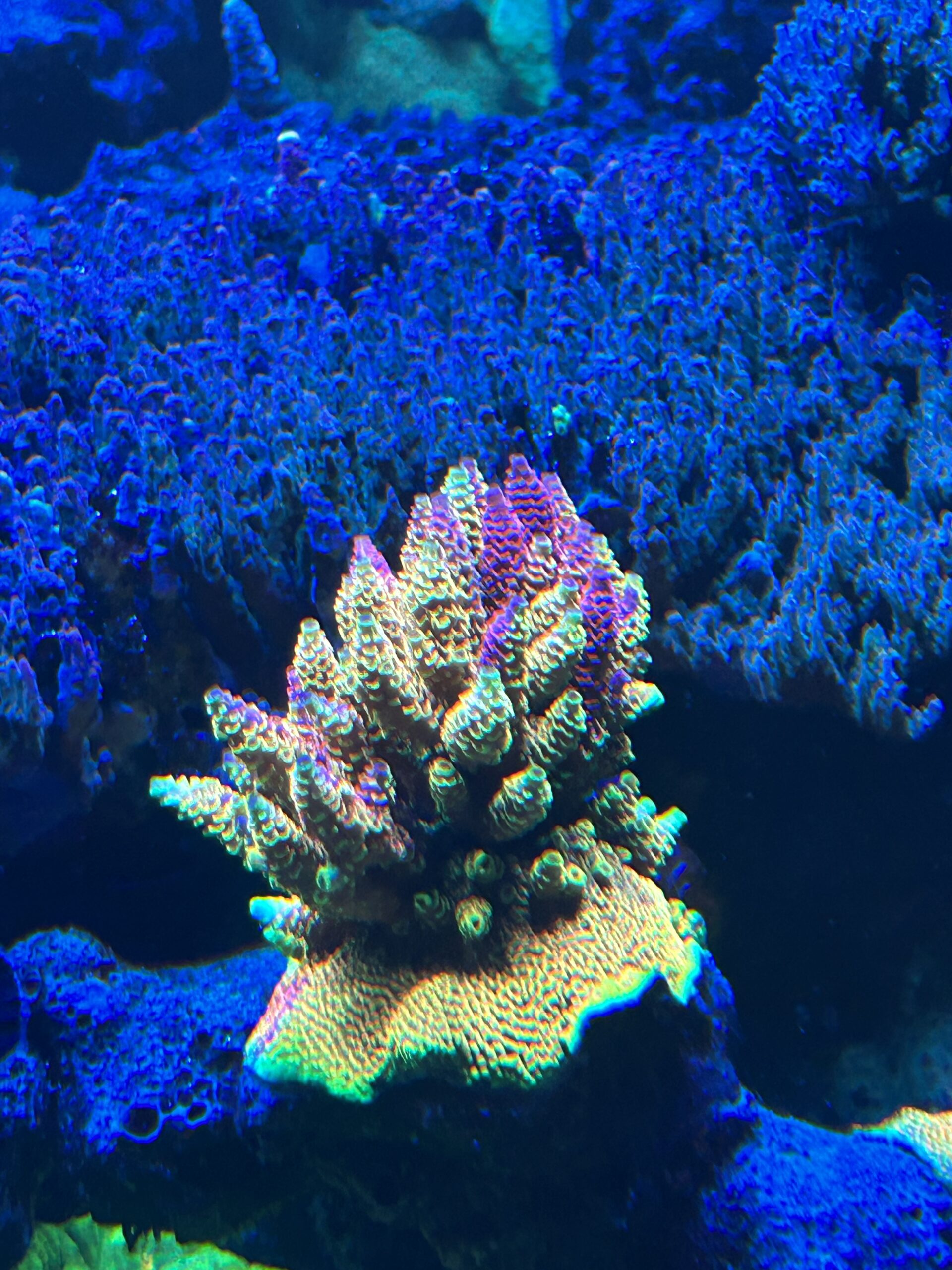
Interestingly at MACNA last year I was discussing this with Claude Schumacher of Fauna Marin and he said on his coral farm and in his examination of the hundreds of thousands of ICP tests that Fauna Marin had run he also found this 100:1 ratio to produce the most colorful corals. Having this confirmation, I now run all of my tanks at this 100:1 ratio and regardless of the phosphate level the nitrate level is always boosted up so that it is 100 times that of the phosphate.
To keep this ratio intact sodium nitrate or potassium nitrate is added. In my tanks the phosphate level averages .08-.10 so I keep the nitrate at 8-10. For some, this may seem high, but there is virtually no algae in my tanks and the corals are as colorful as they have been at any time that I have been in the hobby.
Further confirmation of how important adequate nitrate levels are to coloration occurred in my main display tank in the past month. Due to family issues, I have been negligent in testing for nitrate and phosphate in this tank. Upon resuming testing the phosphate level was .05, while the nitrate level was 0. The corals had consumed all of the nitrate in the tank and during this time I also had not added any to the tank.
On close examination, which I also had not done in a month, it was clear that the color of the corals was significantly reduced and the growth tips that had been robust when the nitrate was adequate were all but negligible. In addition, the Goniopora and Euphyllia corals that are in a connected tank, also were significantly retracted. After taking a week to bring the nitrate level back up, the corals are slowly regaining their former vigor.
Lastly, as I mentioned in the early days of the hobby the goal was to keep the nutrient levels near zero. Since the early days of the hobby, my friend Sanjay has been growing corals faster with more color than just about anyone. A couple of years ago when his corals were looking especially robust and colorful, we decided to test his nutrient level, as he feeds his fish an amazing amount of food.
I should also note that his tanks are always run under bright light, first, it was with halides and now he runs Radion G5 LEDs at 100% intensity with all channels at 100% for eight hours each day. When we tested his nutrient levels we were astounded.
The phosphate level was 1.0 and the nitrate level was over 100. Despite this, there was not a speck of algae anywhere in his system, and all of his corals were thriving. I am not advocating that tanks should be run at this level, only that tanks can be run at higher nutrient levels than are what is often promoted.
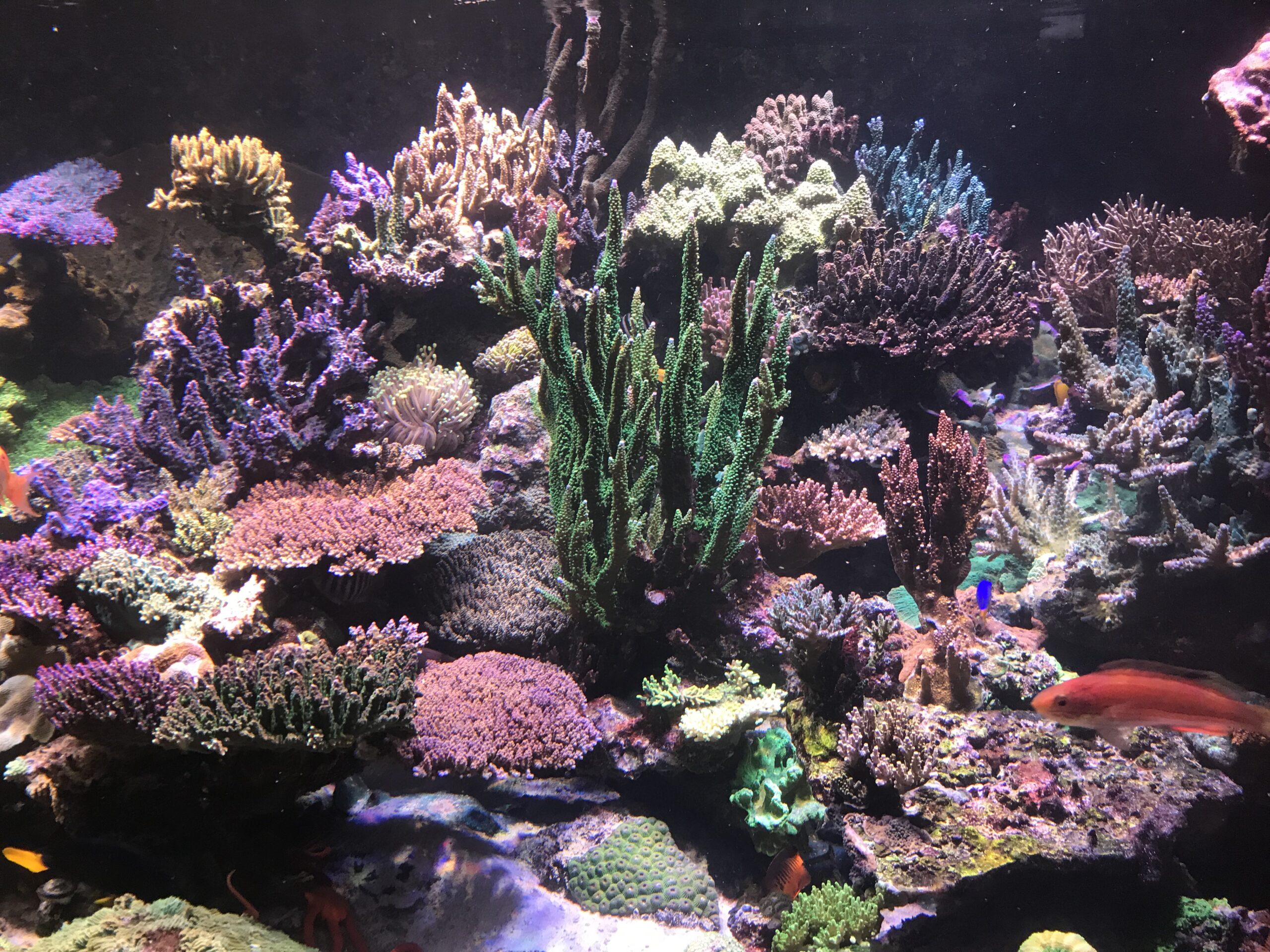
While we have come a long way in understanding and optimizing as well as removing excess nutrients, there still is much to be learned. While keeping nutrients under control is still optimal, understanding what the nutritional needs are of every tank and maintaining them in a stable manner is now the ultimate goal for the long-term health of our corals.
Being able to manipulate their levels up and down now makes it possible to determine just how important they are.


